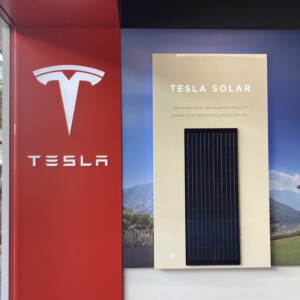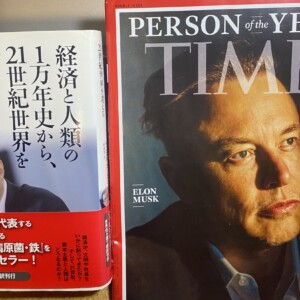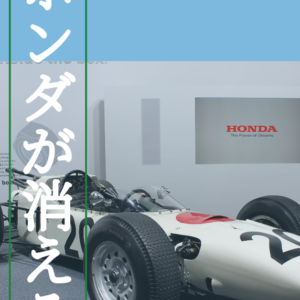
BYD enters light EV competes with Suzuki and Daihatsu, and has a global strategy to surpass Japanese cars
BYD, a major Chinese EV manufacturer, is said to be developing a light EV and entering the Japanese market in earnest. Mini cars are a unique Japanese standard, so they are unique to Japanese cars. It’s a big deal because BYD, which is selling EVs that are cheaper in the world, will be involved. However, Suzuki and Daihatsu Industry, which are in control of the light market, will launch EVs in earnest from now on. As small cars are expected to be the mainstay in the next generation EV market, Suzuki and Daihatsu cannot lose to BYD in the light EV market. The battle that BYD starts with Suzuki Daihatsu can actually be seen as a struggle for hegemony that stares at the EV world market.
Light’s struggle for hegemony glares at the world market
According to the Nikkei, BYD plans to develop a dedicated car that meets the Japanese light standard and launch it in 2026. The light standard is a three-wheeled or four-wheeled vehicle with an engine displacement of 660CC or less, a total length of 3.4 meters or less, a total width of 1.48 meters or less, and a total height of 2.0 meters or less. In the case of an EV, it is classified according to the size of the car body because it is not equipped with an engine. There are more compact European cars, but it is judged that it is not worth it to develop and produce according to Japan’s unique light specifications, and so far only Japanese car manufacturers have not sold light cars.
Then, why does BYD enter the Japanese light market? It is to compete head-on with Japanese cars and appeal to the high quality of Chinese cars. Japanese cars until the 1980s were the same, although they looked somewhat bad, they were appreciated for their high quality that did not break down even at a low price, and Japanese car manufacturers such as Toyota Motor Corporation made a leap forward in the global market with that reputation as a footp.
Chinese cars are increasing their presence in the global market, but the low price is still a weapon. It has not received a high reputation for quality or design. We have also launched a small EV in Japan, but the number of sales is completely insufficient.
The evaluation of Japanese consumers is the world’s quality
“U.S. cars are not running in Japan,” U.S. President Trump is indignant for inexplicable reasons, but Japanese consumers are not known for being picky about price as well as quality. There should be no slight scratch on the car body. It is natural that there is no malfunction. In particular, it sharpens the nerves of the ease of use in the car, such as around the seat.
The reason why mini cars account for 40% of the Japanese new car market is that although the car body is smaller, it is highly supported by consumers for good fuel economy and the size of luggage loading space. Through competition with Suzuki and Daihatsu, BYD aims to acquire the strengths of Japanese cars that use attention to detail such as high quality and ease of use.
Moreover, Japan’s light market should be staring at the powerful touchstone for predicting the next-generation EV market. Even though BYD surpassed Tesla to take the world’s top position in EVs, the majority of the production is made up of easy-to-use hybrid vehicles. Although technology development is accelerating, the battery’s power storage capacity and charging-related infrastructure development are still insufficient. The selling price is also quite expensive compared to engine cars. Both are the reasons why the spread of EVs has stalled. There is a possibility that high-end EVs can be sold in Europe and the United States, but if you look at the global strategy of EVs, it is essential to have an easy-to-use and affordable EV for developing countries with a short range and low purchasing power.
It will appear at a surprising price.
BYD has a good chance of winning. First of all, it has the advantage of being able to fully compete with Japanese light EVs because it can procur EV-related core products such as batteries at a discount. Due to the fact that the Chinese government is supporting EV sales in the domestic market, BYD will set a low price that Europe, the United States and Japan cannot match with the mass production effect that creates a spring to expand its market share in the world’s largest Chinese market. In the past few years, the driving force behind Tesla and leaping into the world’s top EV manufacturer is its price destruction. When a light EV is released in 2026, wouldn’t Japanese car manufacturers offer a surprising price?
Will Japanese cars, which are waiting for BYD’s new entry in the light market, be defeated? Nissan and Mitsubishi Motors launched a light EV in the summer of 2022 and made a big hit, and also launched a light commercial vehicle. Honda will launch a light commercial vehicle in the fall of 2024. Toyota, Suzuki, and Daihatsu plan to launch a commercial light EV jointly developed in 2025. I’m sorry, but overall, I’m a little late.
I’m going to be slapped by BYD, but Japanese EVs are finally going to start. BYD, which is shielded by the Chinese government, is a pretty strong enemy. Let’s avoid a narrow view that will be distracted by price competition in the light struggle with BYD. The winner of Japan’s light EV will also be the winner in the global EV market. Gambare!!






